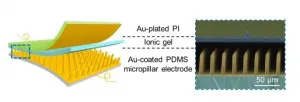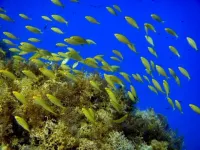(Press-News.org) Key takeaways
Surgery is an underused treatment for certain pancreatic cancer patients.
Patients with pancreatic cancer who underwent surgery after chemotherapy lived nearly twice as long as those treated with only chemotherapy.
Findings confirms current recommendations for stage II pancreatic cancer: survival improves when patients receive multimodality therapy, chemotherapy before and/or after surgery.
All analyses of the data delivered the same findings.
CHICAGO (March 26, 2021, 9:00 am CDT): Patients with stage II pancreatic cancer who are treated with chemotherapy followed by resection (an operation that removes the cancerous part of the organ, structure or tissue) live nearly twice as long as patients who receive only chemotherapy, according to a new Journal of the American College of Surgeons study published online in advance of print.
In stage II patients, there is a chance that pancreatic cancer can be removed by resection even after it has spread close to blood vessels. Although chemotherapy can improve outcomes, the risk of surgery is justified because the patients live longer even if the cancerous tissue is not entirely removed, according to the study from researchers at the University of Arizona Department of Surgery, Tucson.
Surgery can improve survival
The researchers found that patients who received chemotherapy followed by resection lived an average of 19.75 months, while those who received only chemotherapy lived an average of 10.12 months. They examined data from the National Cancer Database (NCDB), a joint program of the American College of Surgeons and the American Cancer Society.
"Our results show that surgery is viable in more cases than we thought," said Amanda K. Arrington, MD, MHM, FACS, a surgical oncologist at the University of Arizona Department of Surgery, Tucson.
Pancreatic cancer is the fourth leading cause of cancer deaths in men and women in the U.S.1,2 Survival rates for pancreatic cancer are low because it is a fairly aggressive, fast-growing cancer, Dr. Arrington said. Approximately 10 to 30 percent of these patients present with disease in which resection may be considered an appropriate therapy. Chemotherapy can improve the chances for successful surgery, as about one in three borderline cases are resectable following chemotherapy.3 Even after surgery, however, it is common for pancreatic cancer to return.
While the goal of resection is to remove all of the tumor tissue, it can be difficult to accomplish, especially if the cancer has spread to nearby blood vessels that feed the liver and small intestine. Margin status, or how much cancerous tissue is left post-surgery on the edges of the resected area, is a significant predictor of survival after surgery for pancreatic cancer. Patients with no cancerous tissue left after resection (R0) have improved survival compared with patients with microscopic amounts (R1) or macroscopic amounts (R2) of cancerous tissue left after resection. This study looked at R1 and R2 resection outcomes compared with chemotherapy alone.
Study details
Dr. Arrington and her colleagues searched NCDB data from 2010 to 2015 for stage II pancreatic cancer patients who underwent R1/R2 surgery with or without pre-operational chemotherapy to compare to stage II patients who received chemotherapy alone. They found:
Out of a total of 11,699 stage II pancreatic cancer patients, 9,521 (81.4 percent) were treated with chemotherapy alone, while 2,178 (18.6 percent) underwent surgical resection and had positive margins (R1 or R2).
Of the surgical group, 1,836 (84.3 percent) underwent upfront surgery and 342 (15.7 percent) had chemotherapy followed by surgery.
The R1 or R2 patients that had chemotherapy before resection had the best overall survival at a mean of 19.75 months, followed by the upfront surgery group with a mean survival of 17.77 months, and the chemotherapy alone group with a mean survival of 10.12 months.
The data was analyzed in multiple ways to address potential bias; all analyses of the data delivered the same findings.
Study results confirm current recommendations for stage II pancreatic cancer, which note that survival improves when patients receive multimodality therapy, chemotherapy before and/or after resection. Further, patients benefit from surgery even in extremely difficult cases that end up with a margin positive resection, Dr. Arrington said. The researchers found even when the tumor does not shrink significantly in response to chemotherapy, there are still survival benefits to taking an aggressive surgical approach.
"Based on this study, surgeons can be a little more aggressive and offer surgical treatment more often than not to stage II pancreatic cancer patients," Dr. Arrington said. "There are ongoing studies looking at whether more pancreatic cancer patients, including stage I patients, would benefit from surgery after chemotherapy."
Other study authors include Chiu-Hsieh Hsu, PhD; Kenzie L. Schaefer, BS; Catherine L. O'Grady, MPH; Mohammad Khreiss, MD; and Taylor S. Riall, MD, PhD, FACS, all from the University of Arizona.
"FACS" designates that a surgeon is a Fellow of the American College of Surgeons.
Presented at the Western Surgical Association Annual Meeting (virtual), November 2020.
Study authors have no disclosures related to this research.
INFORMATION:
Citation: Survival After Margin Positive Resection in the Era of Modern Chemotherapy for Pancreatic Cancer: Do Patients Still Benefit? Journal of the American College of Surgeons. DOI: https://doi.org/10.1016/j.jamcollsurg.2021.02.020.
1: Siegel RL, Miller KD, Jemal A. Cancer statistics, 2019. CA Cancer J Clin. 2019;69(1):7-34.
2: Rahib L, Smith BD, Aizenberg R, Rosenzweig AB, Fleshman JM, et al. Projecting cancer incidence and deaths to 2030: the unexpected burden of thyroid, liver, and pancreas cancers in the United States. Cancer Res. 2014;74(11):2913-2921.
3: Gillen S, Schuster T, Meyer Zum Buschenfelde C, et al. Preoperative/neoadjuvant therapy in pancreatic cancer: a systematic review and meta-analysis of response and resection percentages. PLoS Med. 2010;7(4):e1000267.
About the American College of Surgeons
The American College of Surgeons is a scientific and educational association of surgeons that was founded in 1913 to raise the standards of surgical education and practice and to improve the quality of care for surgical patients. Its achievements have placed it at the forefront of American surgery and have made the College an important advocate for all surgical patients. The College has more than 82,000 members and is the largest organization of surgeons in the world. For more information, visit http://www.facs.org (.)
In recent years, with the rapid development of flexible electronic skins, high-performance flexible tactile sensors have received more attention and have been used in many fields such as artificial intelligence, health monitoring, human-computer interaction, and wearable devices. Among various sensors, flexible capacitive tactile sensors have the advantages of high sensitivity, low energy consumption, fast response, and simple structure. Sensitivity is an important parameter of the sensor. A common way to improve sensitivity is to introduce microstructures and use ionic dielectric materials at the interface ...
A new catalyst for the conversion of carbon dioxide (CO2) into chemicals or fuels has been developed by researchers at Ruhr-Universität Bochum and the University of Duisburg-Essen. They optimized already available copper catalysts to improve their selectivity and long-term stability. The results are described by the team led by Dr. Yanfang Song and Professor Wolfgang Schuhmann of the Bochum Center for Electrochemistry with the team led by Professor Corina Andronescu of the Duisburg-Essen Technical Chemistry III group in the journal Angewandte Chemie, published online on 9 February 2021.
Boron makes copper catalyst stable
The ...
Current approaches to a common and debilitating knee injury that occurs more frequently for women than men have focused for too long on biology at the expense of understanding social factors, say the authors of a new paper in the British Journal of Sports Medicine (BJSM).
Girls and women are said to be between three to six times more likely to suffer an anterior cruciate ligament (ACL) injury, where one of the key ligaments that helps to stabilise the knee joint is damaged. The devastating injury, which in extreme cases can be career ending for professional sportspeople, commonly occurs during sports that involve sudden changes in direction (e.g. basketball, football ...
When the brain suffers injury or infection, glial cells surrounding the affected site act to preserve the brain's sensitive nerve cells and prevent excessive damage. A team of researchers from Charité - Universitätsmedizin Berlin have been able to demonstrate the important role played by the reorganization of the structural and membrane elements of glial cells. The researchers' findings, which have been published in Nature Communications*, shed light on a new neuroprotective mechanism which the brain could use to actively control damage following neurological injury or disease.
The nervous system lacks the ability to regenerate nerve cells and is therefore particularly vulnerable to injury. Following brain injury or infection, various cells ...
An elusive whale species in the Southern Ocean could be resilient to near-future ecosystem changes, according to a new study by the universities of Exeter and Copenhagen.
Gray's beaked whales living in the deep oceans of the Southern Hemisphere are rarely seen alive and their ecology has remained a mystery to scientists until now.
The study used genome sequencing of 22 whales washed up on beaches in South Africa, Australia and New Zealand to investigate the history of the population over the past 1.1 million years.
Author of the study Dr Kirsten Thompson, of the University of Exeter, said: "The population approximately doubled about 250 thousand years ago, coinciding with a period of increased Southern Ocean productivity, sea surface temperature and a potential ...
Nanowires are vital components for future nanoelectronics, sensors, and nanomedicine. To achieve the required complexity, it is necessary to control the position and growth of the metal chains on an atomic level. In the journal Angewandte Chemie, a research team has introduced a novel approach that generates precisely controlled, helical, palladium-DNA systems that mimic the organization of natural base pairs in a double-stranded DNA molecule.
A team from Europe and the USA led by Miguel A. Galindo has now developed an elegant method for producing individual, continuous chains of palladium ions. The process is based on self-organized assembly of a special palladium complex ...
A new study analyzes the larval dispersal of nine fish species in the western Mediterranean and identifies three large areas in which there is barely fish exchange, so fish would remain in the same area all their life.
The study, published in the journal Progress in Oceanography, is led by experts of the Faculty of Biology of the University of Barcelona and the Biodiversity Research Institute (IRBio) of the UB, the Blanes Center for Advanced Studies (CEAB-CSIC), the Balearic Islands Coastal Observing and Forecasting System (ICTS - SOCIB), and the Mediterranean Institute for Advanced Studies (IMEDEA, CSIC-UIB).
The three identified areas are the Balearic Sea, the West Algerian Basin, and ...
A new method makes it much easier to follow the progression of multiple myeloma, a form of blood cancer. With a single drop of blood, it is possible to very accurately show whether the number of cancerous cells in the bone marrow is increasing in a patient. In time, this blood test could potentially replace the current bone marrow puncture.
Researchers at Radboud university medical center, in collaboration with Erasmus MC, have taken an important step towards implementing this new diagnostic, with a study published in Clinical Chemistry. Multiple myeloma is a severe form ...
Perovskites, a class of materials first reported in the early 19th century, were "re-discovered" in 2009 as a possible candidate for power generation via their use in solar cells. Since then, they have taken the photovoltaic (PV) research community by storm, reaching new record efficiencies at an unprecedented pace. This improvement has been so rapid that by 2021, barely more than a decade of research later, they are already achieving performance similar to conventional silicon devices. What makes perovskites especially promising is the manner in which they can be created. Where silicon-based devices are heavy and require high temperatures for fabrication, perovskite devices can be lightweight and formed with minimal energy investiture. It is this combination - high performance ...
New study led by the University of Helsinki supports the recognition of new species of South American owls, two of them, Xingu Screech Owl and Alagoas Screech Owl, described for the first time.
In early 2021 two new species of screech owls are being described in a single publication as new to science. A multinational team involving researchers from the University of Helsinki, Brazil, and the USA published a detailed study focusing on the morphological, vocal, and genetic variation in a group of screech owls from the Amazon and Atlantic Forest regions of South America, called the Black-capped / Tawny- bellied Screech Owl complex (Megascops atricapilla - M. watsonii). The term "complex" describes ...




